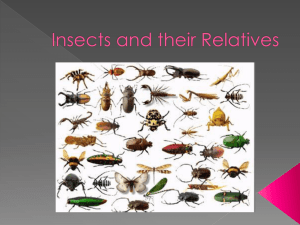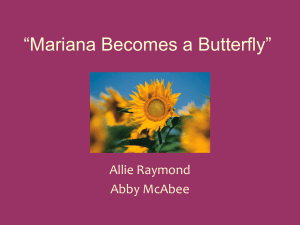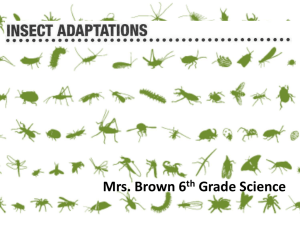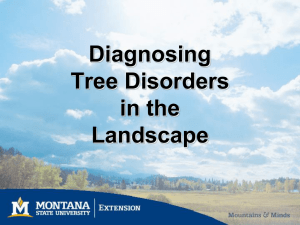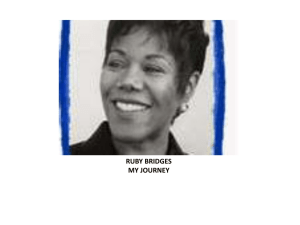CASD Generic TDA Presentation Elementary - falconsela
advertisement
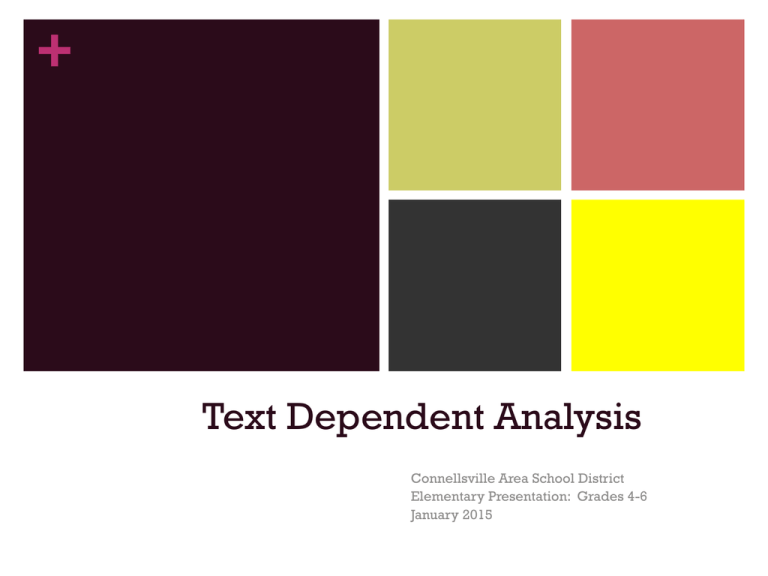
+ Text Dependent Analysis Connellsville Area School District Elementary Presentation: Grades 4-6 January 2015 + What the students need to Know and Show + What the Students need to Know and Show E.O._.1.1 Draw evidence from literary or informational texts to support analysis, reflection, and/or research Introduction State opinion/topic Establish situation Create Organizational structure relate ideas logically + What the Students need to Know and Show E.O._.1.1 Draw evidence from literary or informational texts to support analysis, reflection, and/or research Develop Analysis passage based evidence Grade 4 & 5: support claims/opinions/ideas/inferences Grade 6: demonstrating an understanding of the text(s) + What the Students need to Know and Show Link Ideas Grade 4: within categories – using words and phrases Grade 5: add transitional clauses E.O._.1.1 Draw evidence from literary or informational texts to support analysis, reflection, and/or research Grade 6: appropriate transitions to clarify relationships + What the Students need to Know and Show E.O._.1.1 Draw evidence from literary or informational texts to support analysis, reflection, and/or research Precise Language Domain/Specific Vocabulary + What the Students need to Know and Show Establish Formal Style E.O._.1.1 Draw evidence from literary or informational texts to support analysis, reflection, and/or research Only Grades 5 on + What the Students need to Know and Show Conclusion Grade 4: statement or section Grade 5: must be section E.O._.1.1 Draw evidence from literary or informational texts to support analysis, reflection, and/or research Grade 6: must be section that follows from analysis + What it Looks Like A Short Review + Grade 4 Mystery Club page 20 Walking Stick page 48 Grade 5 What It Looks Like Bald Eagle page 32 Anita Roddick-The Body Shop page 60 Grade 6 Stone Soup page 24 The Body’s Clock page 64 + What It Looks Like TDA Questions Grade 4 Grade 4 Mystery Club page 20 Walking Stick page 48 Key Ideas and Details Craft and Structure Grade 5 Bald Eagle page 32 Anita Roddick-The Body Shop pg 60 Grade 5 Key Ideas and Details Character Development Grade 6 Grade 6 Stone Soup page 24 Theme Key Idea and Details The Body’s Clock page 64 + Instruction Demonstration Passage + Instruction 2-Column Organizer What the Text Says What the Text Means + Instruction STEP 1: Underline what the prompt asks you to do STEP 2: Read the article STEP 3: Read the article again and fill in “What the Text Says” in 2column Organizer. LEAVE THIS SIDE BLANK. RETURN, AND THINK HARD ABOUT WHAT THE TEXT MEANS + Instruction STEP 3: B. Now think hard about what the text is saying and fill in what you think it means. C. Look for D. E. F. G. Cause/Effect Key Ideas and Details Relationships Theme + Instruction STEP 4: Fill in Transitions Helped the blind man a little You know that it was … if First, he opened his tool bos. Then he opened the piano. The passage says that the man The man said that So you know Must have had good memory + Instruction STEP 5: Write the Body of the essay Body: When the author was nine years old Mr. Rozak came to his house and taught him a “lesson of a lifetime.” That is as old as I am, so it is a good time to learn a lesson you can remember for a lifetime. Mr. Rozak came with a white cane, so the author knew he was blind because only blind people are allowed to carry those canes. First Mr. Rozak opened his tool box and the author said, “I’d never seen anything arranged in such an orderly way.” You know it was neat and tidy if he had NEVER seen anything so orderly. Then Mr. Rozak opened the piano. There were 200 strings and tuning pegs. That is a lot to remember, so he must have had a good memory. The passage said that the man “returned each tool to its exact spot” when he finished using it. That would be the only way he could easily find it again. Mr. Rozak told the author that he learned “if I organized my things carefully, I’d be able to work as well as someone with two perfectly good eyes.” That was the lesson that the author learned. He learned to keep his things neat and tidy so he could easily find them again. This “new vision” was taught by a blind man! + Instruction STEP 6: Now identify the introduction and conclusion. If you don’t have a good intro or conclusion now is the time to change it or add one! STEP 7: Reread. You can cross out and insert a better word or phrase. add a transition. even add a whole sentence in small print! Introduction: When the author was nine years old Mr. Rozak came to his house and taught him a “lesson of a lifetime.” That is as old as I am, so it is a good time to learn a lesson you can remember for a lifetime. Conclusion: That was the lesson that the author learned. He learned to keep his things neat and tidy so he could easily find them again. This new “vision” was taught by a blind man! + Grade 4 + Grade 4 The Halifax Explosion The author write, “… if any one in a series of missteps and mistakes had been handled differently, the city might have been spared.” Analyze the events that took place on December 6, 1917, and explain how they could have been handled differently to avoid The Halifax Explosion. Include information from the text to support your response. The author write, “… if any one in a series of missteps and mistakes had been handled differently, the city might have been spared.” Analyze the events that took place on December 6, 1917, and explain how they could have been handled differently to avoid The Halifax Explosion. Include information from the text to support your response. + Instruction STEP 1: Underline what the prompt asks you to do STEP 2: Read the article STEP 3: Read the article again and fill in “What the Text Says” in 2column Organizer. LEAVE THIS SIDE BLANK. RETURN, AND THINK HARD ABOUT WHAT THE TEXT MEANS + Instruction STEP 3: B. Now think hard about what the text is saying and fill in what you think it means. C. Look for D. E. F. G. Cause/Effect Key Ideas and Details Relationships Theme + Instruction So STEP 4: Fill in Transitions Perhaps It just so happened that but the text doesn’t really tell you why he was late. On the next day When they realized they were in danger, However, + Instruction STEP 5: Write the Body of the essay Body: On December 5, the Mont-Blanc was near the harbor in Halifax. It was packed with massive amounts of explosives, but it wasn’t flying a warning flag so other ships wouldn’t know it was carrying dangerous materials. The pilot arrived at the ship too late to depart, so the Mont-Blanc had to stay outside the harbor overnight. Perhaps the pilot could have arrived earlier, or on time, but the text doesn’t really tell you why he was late. It just so happened that the Imo didn’t receive coal to set off on December 5 as scheduled. This was an unfortunate event. Now the Imo was behind schedule and began to hurry to make up lost time. On the next day, the Imo sped toward a small area of the harbor, The Narrows. The Mont-Blanc was heading into the Narrows from the opposite direction. Both of the ships were approaching “The Narrows” about the same time. The Narrows means that 2 ships couldn’t fit through at the same time. The Imo refused to get out of the way because it was rushing. It was behind schedule and didn’t want to waste more time. When they realized they were in danger, both ships reacted. The Mont-Blanc veered left, the Imo headed in reverse. However, the reactions didn’t move the ships out of each other’s way but now put them on a collision course. + Instruction STEP 6: Now identify the introduction and conclusion. If you don’t have a good intro or conclusion now is the time to change it or add one! STEP 7: Reread. You can: o cross out and insert a better word or phrase. o o add a transition. o o even add a whole sentence in small print! Introduction: On December 6, 1917, a terrible explosion occurred in the harbor of Halifax. The explosion could have been prevented if just one of the many things that went wrong hadn’t happened. Conclusion: If one of these things could have been changed, the terrible explosion wouldn’t have happened. + Grade 5 Instruction Prompt: + Perfection Coach, Grade 5, page 125 Read the passage “Helping Helpful Insects.” Write an essay analyzing how insects can be beneficial to humans. Include information from the text to support your response. + Instruction STEP 1: Underline what the prompt asks you to do STEP 2: Read the article STEP 3: Read the article again and fill in “What the Text Says” in 2column Organizer. LEAVE THIS SIDE BLANK. RETURN, AND THINK HARD ABOUT WHAT THE TEXT MEANS + Instruction STEP 3: B. Now think hard about what the text is saying and fill in what you think it means. C. Look for D. E. F. G. Cause/Effect Key Ideas and Details Relationships Theme + Instruction STEP 4: Fill in Transitions You may not have realized that So For example, They fly from … In another example The broken down soil is Try your the Broken hand at this down soil is one! 1% of the insects are harmful. However, the other 99% this allows + Instruction STEP 5: Write the Body of the essay Body: You may not have realized that there are more helpful insects than harmful ones. For example, bees and wasps pollinate crops. They do this by flying from one the flower of a seedling to another of the same kind. When they pollinate the crops like this, the crops can grow and mature and are able to produce crops food for the hungry in the world. In another example, beetles and ants break down soil and return the nutrients to the soil. The broken down soil makes it rich and able to produce abundant crops. In addition, bees and also silkworms produce products. Bees, those pesky little insects with stingers, make honey. If it weren’t for bees, you wouldn’t have honey to spread on your toast in the morning. Not only do insects produce products such as honey and pollinate crops, they also get rid of harmful insects. If they are predators, they eat the insects. By eating the insects, beneficial insects get rid of the harmful ones. + Instruction STEP 5: Write the Body of the essay STEP 6: Write the Introduction and Conclusion STEP 7: Reread. You can cross out and insert a better word or phrase. Introduction: You may be sitting at a picnic on a warm summer day and find yourself annoyed by the buzzing bees and uninvited ants. Before you begin to get rid of these insects, you might want to think about how they fit into nature. These insects pollinate, break down soil, and provide useful products. Some of them even get rid of harmful insects. Conclusion: add a transition. even add a whole sentence in small print! So, next time you find yourself outside at a picnic, try to think of how important they are in nature. Try to think of the 99% of insects who are beneficial before you begin to swat at them. + Grade 6 Instruction Prompt: + Perfection Coach, Grade 6, page 142 – 144 Ruby Bridges was the first African American to integrate an all-white school in New Orleans, LA on November 14, 1960. Write an essay analyzing the effect Ruby Bridges had on the officer who writes “A Tale of Courage”. Include information from the passage to support your response. + Instruction STEP 1: Underline what the prompt asks you to do STEP 2: Read the article STEP 3: Read the article again and fill in “What the Text Says” in 2column Organizer. LEAVE THIS SIDE BLANK. RETURN, AND THINK HARD ABOUT WHAT THE TEXT MEANS + Instruction STEP 3: B. Now think hard about what the text is saying and fill in what you think it means. C. Look for D. E. F. G. Cause/Effect Key Ideas and Details Relationships Theme + Instruction STEP 4: Fill in Transitions 1. When the officer looks at R.B. he sees Initially, he tells his wife that So you know that He says that and means that Note: no transition needed 2. The kind of work the officer does makes him to know that Now his…and + Instruction STEP 5: Write the Body of the essay Body: When the officer leaves his home in the morning, he tells his wife that he will send a message that “violence won’t be tolerated.” When he says that to his wife, he is also saying that he believes in the message. He tells his wife that “It’s just not right” that going to school is causing that little girls so much pressure. He means that it’s just not right for people to be so hateful. When the officer arrives at the school, he is not feeling very optimistic about the day because protestors have signs, hate in their faces, and are shouting cruel words. Although not shocked, he is disappointed and saddened. The officer doesn’t think the next few days will be peaceful. Because of the signs and faces and words he thinks his mission will be difficult and no more along peacefully. Then, when he sees the car pull up to the curb and a “courageous little girl” enter the school. The kind of work the officer does makes him understand that courage is a leadership quality. He becomes optimistic at this point because a “courageous little girl”, a first grader, is making people think about their fears and hate. The officer calls Ruby Bridges a “beacon of promise for a world to come.” A beacon is a light, so the officer thinks this little girl will be a light to lead the world to live together in harmony and to be treated with dignity and justice. When the officer says that he “hangs his hopes on Ruby” he means that he is now very optimistic because of the courage Ruby shows. He believes that Ruby’s actions can be an example to others and show them how to live in harmony and support justice for all. + Instruction STEP 5: Write the Body of the essay STEP 6: Write the Introduction and Conclusion STEP 7: Reread. You can cross out and insert a better word or phrase. add a transition. even add a whole sentence in small print! Introduction: On the morning Ruby Bridges, a first grader, entered an all white school to get a good education, one of the officers who was assigned to protect her was not very hopeful. When he saw hate in his neighbors faces and heard their cruel words, he thought his job was not very promising and the day might be dangerous. He reassured his wife about his safety, but he didn’t really believe it. Conclusion: Although the officer was not very optimistic about the day when he left his house in the morning, seeing the courage of Ruby Bridges changed his mind. Just by watching her head held high and her courage, he became optimistic that her example would lead others to treat people with dignity and justice rather than see people’s hate. The officer will be proud of his part in helping Ruby achieve this goal. Anna DeForest atdeforest@aptitudeprimed.com + Cindy Hina cbluvla@hotmail.com
